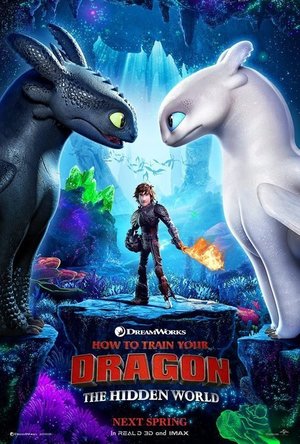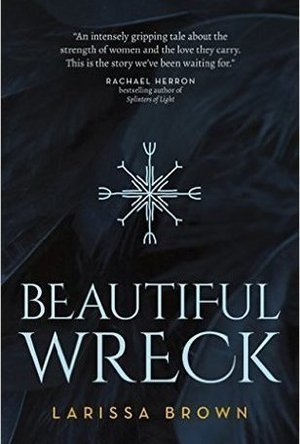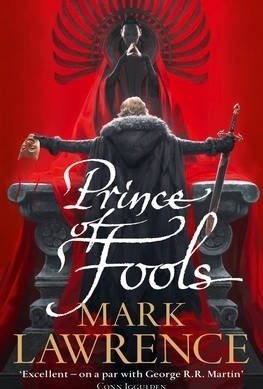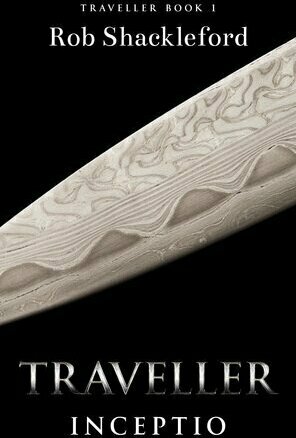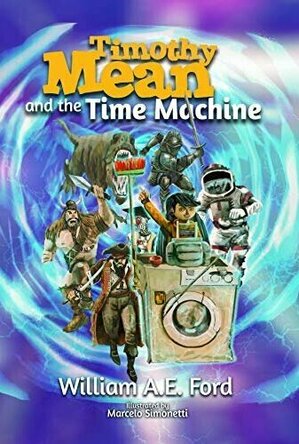Search
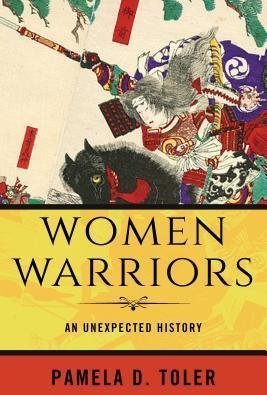
Women Warriors: An Unexpected History
Book
Who says women don't go to war? From Vikings and African queens to cross-dressing military doctors...
Charlie Cobra Reviews (1840 KP) rated How To Train Your Dragon: The Hidden World (2019) in Movies
Jul 3, 2020
Flying On Fumes: Bittersweet End to Dragons - 7/10
How To Train Your Dragon: The Hidden World is the final installment in the trilogy of films based on the books by Cressidia Cowell. It was written and directed by Dean Deblois, produced by DreamWorks Animation and distributed by Universal. With a returning cast starring Jay Burachel, America Ferrera, Cate Blanchett, and Craig Ferguson.
One year after (How To Train Your Dragon 2) Hiccup (Jay Burachel) and friends defended Berk from the threat of Drago Bludvist; the group is still rescuing dragons and relocating them back to their village. Now however the villagers are dealing with a problem of overcrowding and overpopulation of dragons. Hiccup begins the process of finding a new home for everyone to relocate to, the fabled "Hidden World" of the dragons. The conflict of the film enters when the Vikings whose dragons Hiccup has been freeing, seek the help of Grimmel the Grisly (F. Murray Abraham), a dragon hunter responsible for the eradication and near extermination of all Night Furies. And also Toothless being enamoured with the discovery of a female White Fury dragon.
This movie was really good and while watching I had fun seeing the whole group dynamic and how everyone interacted with each other. It felt awesome seeing them again and how they all grew up a little over the last year. When comparing this movie to the others in the series, it felt like it fell short especially for being the last movie in the trilogy. I guess it was hard to surpass how great the last film was. While visually stunning and exhilarating at times it failed to be as great as it could have and felt like something was missing in this conclusion to an epic series. The atmosphere of the movie felt like it never quite matched the tone that they were trying to set with the seriousness of the plot. It's like only the main character felt the weight of the world on his shoulders but it is a kids movie after all. Like I said certainly enjoyable, I give it a 7/10.
One year after (How To Train Your Dragon 2) Hiccup (Jay Burachel) and friends defended Berk from the threat of Drago Bludvist; the group is still rescuing dragons and relocating them back to their village. Now however the villagers are dealing with a problem of overcrowding and overpopulation of dragons. Hiccup begins the process of finding a new home for everyone to relocate to, the fabled "Hidden World" of the dragons. The conflict of the film enters when the Vikings whose dragons Hiccup has been freeing, seek the help of Grimmel the Grisly (F. Murray Abraham), a dragon hunter responsible for the eradication and near extermination of all Night Furies. And also Toothless being enamoured with the discovery of a female White Fury dragon.
This movie was really good and while watching I had fun seeing the whole group dynamic and how everyone interacted with each other. It felt awesome seeing them again and how they all grew up a little over the last year. When comparing this movie to the others in the series, it felt like it fell short especially for being the last movie in the trilogy. I guess it was hard to surpass how great the last film was. While visually stunning and exhilarating at times it failed to be as great as it could have and felt like something was missing in this conclusion to an epic series. The atmosphere of the movie felt like it never quite matched the tone that they were trying to set with the seriousness of the plot. It's like only the main character felt the weight of the world on his shoulders but it is a kids movie after all. Like I said certainly enjoyable, I give it a 7/10.

Poptropica
Games and Education
App
Poptropica is an open virtual world created by Jeff Kinney, author of DIARY OF A WIMPY KID. Join a...
Chelsee R Clawson (23 KP) rated Beautiful wreck in Books
Mar 18, 2018
Beautiful wreck. A beautiful book!
Step right up ladies and gents for the next time travelling extravaganza! Move over Jamie fraser Heirik's the new guy in town! With outlander on the continuous rise to the top it gives other time travel romances a good run for their money and rightly so who doesnt love jamie fraser and his swoon worthy quotes and fiery lingering gaze. He had me wanting to marry a fictional character from the get go!
Beautiful wreck by the not so well known author larissa brown deserves alot more attention and credit than it has been given. The story is about a woman named ginn who ends up travelling to tenth century iceland I've copied the description off the back of the book to give you a better taste of what the book is about;
In a bleak future built on virtual reality, Ginn is a romantic who yearns for something real. She designs environments for people who play at being Vikings. But when her project goes awry, she's stranded in the actual 10th century, on a storybook farm in Viking Iceland. Heirik is the young leader of his family, honored by the men and women who live on his land. But he is feared and isolated because of a terrible curse. Ginn and Heirik are two people who never thought they would find a home in someone else's heart. When forces rise against them to keep them apart, Ginn is called on to decide-- will she give up the brutal and beautiful reality of the past? Or will she have the courage to traverse time and become more of a Viking than she ever imagined?
Doesn't it sound awesome!? ?
Don't worry I'm not going to spoil the story but I will say that this book in my view is a high contender for the top spot in the time travel/ romance genre. it is so beautifully written and detailed that it feels like your actually there going through the trials and celebrations right along with ginn. It could also have something to do with my overactive imagination but I think it's the former in this case ? I will admit the ending seemed a little rushed, it could've had a bit more detailed but that is just my opinion. With the second book 'so wild a dream' following on in the series I'm not sure how it can get much better than beautiful wreck.
Overall an excellent and enjoyable read, this book will definitely be on my re-read list in the near future.
Beautiful wreck by the not so well known author larissa brown deserves alot more attention and credit than it has been given. The story is about a woman named ginn who ends up travelling to tenth century iceland I've copied the description off the back of the book to give you a better taste of what the book is about;
In a bleak future built on virtual reality, Ginn is a romantic who yearns for something real. She designs environments for people who play at being Vikings. But when her project goes awry, she's stranded in the actual 10th century, on a storybook farm in Viking Iceland. Heirik is the young leader of his family, honored by the men and women who live on his land. But he is feared and isolated because of a terrible curse. Ginn and Heirik are two people who never thought they would find a home in someone else's heart. When forces rise against them to keep them apart, Ginn is called on to decide-- will she give up the brutal and beautiful reality of the past? Or will she have the courage to traverse time and become more of a Viking than she ever imagined?
Doesn't it sound awesome!? ?
Don't worry I'm not going to spoil the story but I will say that this book in my view is a high contender for the top spot in the time travel/ romance genre. it is so beautifully written and detailed that it feels like your actually there going through the trials and celebrations right along with ginn. It could also have something to do with my overactive imagination but I think it's the former in this case ? I will admit the ending seemed a little rushed, it could've had a bit more detailed but that is just my opinion. With the second book 'so wild a dream' following on in the series I'm not sure how it can get much better than beautiful wreck.
Overall an excellent and enjoyable read, this book will definitely be on my re-read list in the near future.
Gareth von Kallenbach (980 KP) rated How to Train Your Dragon 2 (2014) in Movies
Aug 6, 2019
In 2010, the most unlikely Viking proved that dragons and humans can co-exist in the first How To Train Your Dragon film. Set five years after the original movie, How to Train Your Dragon 2 opens up on the Village of Berk where Vikings and dragons have developed a fond relationship. Hiccup (Jay Baruchel), the nerdy chieftain’s son, is now a few years older and has made himself a winged suit and spends his days soaring the skies with his beloved dragon, Toothless. This film brings together the original gang of friends, Astrid (America Ferrera), Fishlegs (Christopher Mintz-Plasse), Snotlout (Jonah Hill), and twins Ruffnut and Tuffnut (Kristen Wiig and TJ Miller). Still at odds with his expectations, Hiccup’s father Stoick (Gerard Butler) demands that he begins the preparations and training to follow in his footsteps and become chief of their Village. This is not the future Hiccup sees for himself, he and Toothless flee the Village and explore the world and stumble upon a cave full of dragons and encounter a Mysterious Dragon Rider (Cate Blanchett), with a similar affinity for dragons. Hiccup has realized that war still exists between dragons and men beyond the borders of his Village. He attempts to negotiate peace with dragon-hunter Drago (Djimon Hounsou), who is threatening to invade the village with his army.
Writer/director Dean DeBlois helms the reins on this one; he has opened up the story without losing the tone of the original. The true delight is in the details, the visual effects are stunning; a prime example of how much computer generated animation has progressed in such a short amount of time. From the diverse landscapes to the design of the characters were absolutely breathtaking. Even the most minute details, such as the texture from the armor, to the scales on the dragons, even the battles scars on the soldiers are so vividly expressed, they assisted in creating the most dramatic and heartfelt moments.
The overall theme has matured from the first film with a continually surprising plot. In the first go around, Hiccup learned to be himself; in this installment Hiccup is taught to become a better version of himself when those unbreakable bonds are tested, and the line between good vs. evil is skewed.
I wouldn’t say there is much training in the sequel, however there is still a wonderful message of friendship, love, and loyalty. Some of the material may be a little too dark, and there were moments that spent way too much time developing the characters which can be pretty taxing for young children.
A worthy follow up….
Writer/director Dean DeBlois helms the reins on this one; he has opened up the story without losing the tone of the original. The true delight is in the details, the visual effects are stunning; a prime example of how much computer generated animation has progressed in such a short amount of time. From the diverse landscapes to the design of the characters were absolutely breathtaking. Even the most minute details, such as the texture from the armor, to the scales on the dragons, even the battles scars on the soldiers are so vividly expressed, they assisted in creating the most dramatic and heartfelt moments.
The overall theme has matured from the first film with a continually surprising plot. In the first go around, Hiccup learned to be himself; in this installment Hiccup is taught to become a better version of himself when those unbreakable bonds are tested, and the line between good vs. evil is skewed.
I wouldn’t say there is much training in the sequel, however there is still a wonderful message of friendship, love, and loyalty. Some of the material may be a little too dark, and there were moments that spent way too much time developing the characters which can be pretty taxing for young children.
A worthy follow up….

Terminator Genisys: Future War
Games
App
Terminator Genisys: Future War is a free-to-play mobile strategy game where the human Resistance is...
Connor Sheffield (293 KP) rated Vikings in TV
Feb 4, 2018
Somewhat historically accurate (2 more)
Visually Compelling
Gripping drama that keeps you wanting more
One of my favourite shows of all time
Vikings, for the first 3 seasons, tells the story of the rise to power of the legendary Ragnar Lothbrok, though the character himself in reality, despite being written about in sagas and poems from that era, remains a mystery to historians to this day.
In the show, Ragnar Lothbrok is portrayed by Travis Fimmel, who is fantastic in any role he has taken from what I have seen of his work. As Ragnar he excels at portraying many aspects of the character, from a loving father, to a fierce warrior. Though you still believe that he has nothing but the best intentions for his people, as well as himself. He is a somewhat difficult man to read as he may seem selfish at time, and yet his actions help the people around him, whilst other times, his actions may appear to be for the benefit of others, when really it is an act of selfishness. No matter what he does though, he does it well.
However, there is more to this show that just Ragnar Lothbrok. There is his wife, Lagertha, a famous shield maiden portrayed by Katheryn Winnick, who is able to achieve the same talent as Fimmel, by portraying the many sides to the character she plays. She is a loving mother, wife, though sometimes troubled, but at the end of the day, she is a badass. A strong female protagonist with a lot to gain and a lot to lose. Her story unfolds more from season 2 onwards and it is one that keeps you on edge, wanting to know what the future holds for Lagertha. Sadly, we have no seers to tell us what the gods have in store for her, we can only watch in suspense as the events unfold.
Then there are the Sons of Ragnar, who in later seasons, become the pinnacle of the show. The main focus, that will shape the future of what the show will become. All of them are incredible actors who portray their characters to the best they can be. My two favourites, are Bjorn Ironside, portrayed by Alender Ludwig, and Ivar The Boneless, portrayed by Alex Høgh Andersen. Both of these young actors excel in creating the best of their characters. Bjorn being the eldest of Ragnars sons, is the one you may become attached to most as he is there from the very beginning, portrayed at first by the young, Nathan O'Toole. In season 2 however, Bjorn is growing into a tall and strong young man, and this is where Ludwig excels. You believe that he is still young and blind from the world as it truly is, but enough so that you can believe that he is willing to learn more and like his father, wishes to know as much as he can about the world.
Ivar on the other hand, is brilliant for his own reason. Andersen's portrayal is fierce, creepy and brutal. He portrays a young man who is willing to overcome any obstacle including his own disability, to prove himself as a great warrior, and a force to be reckoned with. His constant anger is always on display as well, even when he is happy. You can see just from the expressions on his face, that he has so much going through his mind. So much cunning and so much emotion that he does not show. He is phenomanal in his role.
Though there are many other characters and actors to talk about such as Gustaf Skarsgard, who's brother, Bill, recently became notorious for his role as the new updated remake of Pennywise the Clown in IT (2017), as well as Clive Standen as Rollo, Ragnar's brother who is always dancing between loyalty and betrayal. Every cast member in this show is brilliant in what they have achieved with their characters and you will come to enjoy all of them.
The visuals of the show are stunning, with lots of blood and gore, comes a historically accurate representation of the lives and locations of the Vikings of that era. From visions, to battles, to drama. The visual effects keep you entranced and bring the story to life, which makes this show so incredible in my opinion. The best part, is that with each season and each episode, the story and visuals get better and better and leave you wanting more.
The show overall, is brilliant, and I have watched it many times over from the beginning, and it never gets boring. I love the historical accuracy mixed with fantasy elements and drama, which keep it interesting, but more importantly I how the show makes the audience feel. I have felt saddened, shocked and joyful throughout this show as it brilliantly allows each character to grow and flourish into the best they can be. It leaves you in suspense of what it is to come and when the show ends, I shall be very sad, but I have high hopes that they end the show with as much power as they put in each episode from the very beginning. I will continue to watch this show multiple times with each season as I wait for the next to be released. I am on my third run through of the show whilst waiting for part 2 of season 5. As I said before, it just keeps getting better.
In the show, Ragnar Lothbrok is portrayed by Travis Fimmel, who is fantastic in any role he has taken from what I have seen of his work. As Ragnar he excels at portraying many aspects of the character, from a loving father, to a fierce warrior. Though you still believe that he has nothing but the best intentions for his people, as well as himself. He is a somewhat difficult man to read as he may seem selfish at time, and yet his actions help the people around him, whilst other times, his actions may appear to be for the benefit of others, when really it is an act of selfishness. No matter what he does though, he does it well.
However, there is more to this show that just Ragnar Lothbrok. There is his wife, Lagertha, a famous shield maiden portrayed by Katheryn Winnick, who is able to achieve the same talent as Fimmel, by portraying the many sides to the character she plays. She is a loving mother, wife, though sometimes troubled, but at the end of the day, she is a badass. A strong female protagonist with a lot to gain and a lot to lose. Her story unfolds more from season 2 onwards and it is one that keeps you on edge, wanting to know what the future holds for Lagertha. Sadly, we have no seers to tell us what the gods have in store for her, we can only watch in suspense as the events unfold.
Then there are the Sons of Ragnar, who in later seasons, become the pinnacle of the show. The main focus, that will shape the future of what the show will become. All of them are incredible actors who portray their characters to the best they can be. My two favourites, are Bjorn Ironside, portrayed by Alender Ludwig, and Ivar The Boneless, portrayed by Alex Høgh Andersen. Both of these young actors excel in creating the best of their characters. Bjorn being the eldest of Ragnars sons, is the one you may become attached to most as he is there from the very beginning, portrayed at first by the young, Nathan O'Toole. In season 2 however, Bjorn is growing into a tall and strong young man, and this is where Ludwig excels. You believe that he is still young and blind from the world as it truly is, but enough so that you can believe that he is willing to learn more and like his father, wishes to know as much as he can about the world.
Ivar on the other hand, is brilliant for his own reason. Andersen's portrayal is fierce, creepy and brutal. He portrays a young man who is willing to overcome any obstacle including his own disability, to prove himself as a great warrior, and a force to be reckoned with. His constant anger is always on display as well, even when he is happy. You can see just from the expressions on his face, that he has so much going through his mind. So much cunning and so much emotion that he does not show. He is phenomanal in his role.
Though there are many other characters and actors to talk about such as Gustaf Skarsgard, who's brother, Bill, recently became notorious for his role as the new updated remake of Pennywise the Clown in IT (2017), as well as Clive Standen as Rollo, Ragnar's brother who is always dancing between loyalty and betrayal. Every cast member in this show is brilliant in what they have achieved with their characters and you will come to enjoy all of them.
The visuals of the show are stunning, with lots of blood and gore, comes a historically accurate representation of the lives and locations of the Vikings of that era. From visions, to battles, to drama. The visual effects keep you entranced and bring the story to life, which makes this show so incredible in my opinion. The best part, is that with each season and each episode, the story and visuals get better and better and leave you wanting more.
The show overall, is brilliant, and I have watched it many times over from the beginning, and it never gets boring. I love the historical accuracy mixed with fantasy elements and drama, which keep it interesting, but more importantly I how the show makes the audience feel. I have felt saddened, shocked and joyful throughout this show as it brilliantly allows each character to grow and flourish into the best they can be. It leaves you in suspense of what it is to come and when the show ends, I shall be very sad, but I have high hopes that they end the show with as much power as they put in each episode from the very beginning. I will continue to watch this show multiple times with each season as I wait for the next to be released. I am on my third run through of the show whilst waiting for part 2 of season 5. As I said before, it just keeps getting better.
Phil Leader (619 KP) rated Prince of Fools in Books
Nov 25, 2019
Mark Lawrence's previous Broken Empire trilogy was a terrific read, starring as it did an almost perfect anti-hero in shape of Jorg Ancrath, a character who in any other books would have been the major villain.
It was hard to see where Lawrence could go from there. The answer is 'up'. Set in the same world as Broken Empire the events in Prince of Fools take place at roughly the same time as those of Prince of Thorns but following someone who is manipulated by a different set of players than Jorg.
Prince Jalan is the grandson of the Red Queen. He is too far from the throne to have to think seriously about ruling but close enough that he can rely on his rank to provide him a life of luxury - and to get him out of trouble if needs be. He is indolent, self-centered and vain and spends his time either drinking, gambling or trying to bed various women. He describes himself at the start of the book as 'A liar, a cheat and a coward' and he certainly always tries to take the easy path through anything and avoid any actual work or responsibilities.
But things are about to change. He ends up being forced to leave the comforts of court and city life and travel with a companion he doesn't care for on a quest he has no interest in. But he follows along, complaining all the way and plotting on ways to return to the life of leisure and pleasure that he craves.
Whereas Jorg's general reaction to someone in his way is to kill them, Jalan will wheedle, plead or just plain bribe them to get what he wants and on the rare occasions he has to wield a sword he is so shockingly incompetent he is actually dangerous.
The story is excellent; there is a definite impetus and personal reason for the quest and a final showdown in which a terrible truth is revealed. More of the fate of the Broken Empire is revealed as Jalan and his companion travel across it, as well as more of the geography. Jalan's dislike for travel is clear and the descriptions are coloured by his perceptions - it's always too wet or too cold or too flat or too mountainous.
There are some terrific scenes with Lawrence's black humour very much to the fore as in the previous books. There are meetings with characters from the previous trilogy that are like meeting old friends (and yes Jorg and Jalan do cross storylines at a crucial point for both of them).
I would absolutely recommend this book to anyone looking for a great story with absorbing characters, laugh out loud humour and great battle scenes. If you liked Jorg read this book. If you like zombies read this book. If you like vikings read this book. Actually, just read the book. You won't regret it.
It was hard to see where Lawrence could go from there. The answer is 'up'. Set in the same world as Broken Empire the events in Prince of Fools take place at roughly the same time as those of Prince of Thorns but following someone who is manipulated by a different set of players than Jorg.
Prince Jalan is the grandson of the Red Queen. He is too far from the throne to have to think seriously about ruling but close enough that he can rely on his rank to provide him a life of luxury - and to get him out of trouble if needs be. He is indolent, self-centered and vain and spends his time either drinking, gambling or trying to bed various women. He describes himself at the start of the book as 'A liar, a cheat and a coward' and he certainly always tries to take the easy path through anything and avoid any actual work or responsibilities.
But things are about to change. He ends up being forced to leave the comforts of court and city life and travel with a companion he doesn't care for on a quest he has no interest in. But he follows along, complaining all the way and plotting on ways to return to the life of leisure and pleasure that he craves.
Whereas Jorg's general reaction to someone in his way is to kill them, Jalan will wheedle, plead or just plain bribe them to get what he wants and on the rare occasions he has to wield a sword he is so shockingly incompetent he is actually dangerous.
The story is excellent; there is a definite impetus and personal reason for the quest and a final showdown in which a terrible truth is revealed. More of the fate of the Broken Empire is revealed as Jalan and his companion travel across it, as well as more of the geography. Jalan's dislike for travel is clear and the descriptions are coloured by his perceptions - it's always too wet or too cold or too flat or too mountainous.
There are some terrific scenes with Lawrence's black humour very much to the fore as in the previous books. There are meetings with characters from the previous trilogy that are like meeting old friends (and yes Jorg and Jalan do cross storylines at a crucial point for both of them).
I would absolutely recommend this book to anyone looking for a great story with absorbing characters, laugh out loud humour and great battle scenes. If you liked Jorg read this book. If you like zombies read this book. If you like vikings read this book. Actually, just read the book. You won't regret it.
Night Reader Reviews (683 KP) rated Traveller-Inceptio ( Traveller Book 1) in Books
Mar 18, 2020
Honest Review for Free Copy of Book
Traveller Inceptio: Traveller Book 1 by Rob Shackleford is a hard book to put into just one genre. It is both an adventure and a romance while also being science fiction and historical fiction. Overall an odd combination.
A group of friends working towards advanced college degrees decide to work on some research together. They are even able o secure funding from a major security company, Helguard. Their goal is to create new scanning equipment to be used by security in places such as airports. The team works extremely well together and soon they have a working prototype. However, something goes wrong with the machine and a mass of wires fuse together, causing a completely different result. When they turn the machine on and tell it to scan something, the item disappears instead.
After some research, it is discovered that the machine is sending items to the exact same location, just 1,000 years into the past. This discovery naturally gets the attention of governments around the world and the military who try to take over the project. Military men are trained in the ways of the Saxons and are sent back in time to become part of their society and provide reports and pictures of a time period that was originally poorly documented. There are many dangers that the travelers face for this project, but the main one is that the Saxons are currently at war with the Vikings.
What I liked best was the one member of the original team who was largely responsible for the creation of the transporter never claimed it. I am unsure if this is because he remains unaware of what he did, or out of fear because he was messing where he did not belong, either way, this is what stuck with me the most. There was a lot of technical speak, along with war and battle pans that were confusing and boring. The war or battle aspect of the book was very drawn out, though I have never been one to enjoy play-by-play fight scenes.
This is more of an adult book. The length and technical stuff would probably be a bit daunting for younger readers. It is also rather detailed in the more graphic fight scenes (gore) and rape, which might make some readers uncomfortable. I rate this book 2 out of 4. The more interesting parts of this book, such as when Michael is becoming part of the Saxon culture moves quickly and is enjoyable. The duller areas such as the fights and technical speak are dry and really bring this otherwise interesting book down.
https://www.facebook.com/nightreaderreviews/
https://smashbomb.com/nightreader
https://nightreaderreviews.blogspot.com/
A group of friends working towards advanced college degrees decide to work on some research together. They are even able o secure funding from a major security company, Helguard. Their goal is to create new scanning equipment to be used by security in places such as airports. The team works extremely well together and soon they have a working prototype. However, something goes wrong with the machine and a mass of wires fuse together, causing a completely different result. When they turn the machine on and tell it to scan something, the item disappears instead.
After some research, it is discovered that the machine is sending items to the exact same location, just 1,000 years into the past. This discovery naturally gets the attention of governments around the world and the military who try to take over the project. Military men are trained in the ways of the Saxons and are sent back in time to become part of their society and provide reports and pictures of a time period that was originally poorly documented. There are many dangers that the travelers face for this project, but the main one is that the Saxons are currently at war with the Vikings.
What I liked best was the one member of the original team who was largely responsible for the creation of the transporter never claimed it. I am unsure if this is because he remains unaware of what he did, or out of fear because he was messing where he did not belong, either way, this is what stuck with me the most. There was a lot of technical speak, along with war and battle pans that were confusing and boring. The war or battle aspect of the book was very drawn out, though I have never been one to enjoy play-by-play fight scenes.
This is more of an adult book. The length and technical stuff would probably be a bit daunting for younger readers. It is also rather detailed in the more graphic fight scenes (gore) and rape, which might make some readers uncomfortable. I rate this book 2 out of 4. The more interesting parts of this book, such as when Michael is becoming part of the Saxon culture moves quickly and is enjoyable. The duller areas such as the fights and technical speak are dry and really bring this otherwise interesting book down.
https://www.facebook.com/nightreaderreviews/
https://smashbomb.com/nightreader
https://nightreaderreviews.blogspot.com/
Night Reader Reviews (683 KP) rated Timothy Mean and the Time Machine in Books
Jan 9, 2020
Honest Review for Free Copy of Book
Contains spoilers, click to show
Timothy Mean and the Time Machine by William A. E. Ford was a wonderful little children's book. Marcelo Simonetti also created some amazing artwork for the book. The rhymes on just about every line would hold a child's attention and the interesting locations would inspire their imagination. The book is very short, with only about ten pages with text on them. This makes it great to prevent young readers from being intimidated by the size of the book. The book also goes through the days of the week, helping to teach children the names of the days in a fun way.
Being bored one day, a young boy by the name of Timothy Mean decides to build a time machine. He visits Vikings and Pirates on their ships, causing them trouble. He visits his parents while they are children and in school themselves. At one point he even pulls the pants down on am astronaut. No trip in time would be complete without a trip into the future so that is exactly what he does. Timothy also likes playing pranks and being a trouble-maker at each location he visits.
The locations visited and Timothy's pranks open up chances for discussion with parents and slightly older children. Parents could ask their children all kinds of things about the book. They could ask about if their child would want to walk on the moon, or what they think the future will be like. Parents could ask about what their child would do if they were a pirate or maybe what they think life was like in mid-evil times. Almost any children's book that encourages children to think and use their imagination is a good one.
I loved the book. What I liked most were the fun rhymes and locations. If I absolutely had to pick something I did not like it would have to be the few lines that did not rhyme as they almost upset the flow of the passage. Though in all honesty, it is not a big issue and for a children's book writers are somewhat limited on their options to ensure a child would understand.
Target readers for this book are anyone. As a mother, I would feel comfortable reading this book to my children no matter how young. I also feel like this would be a good book for a beginning reader, maybe a page a dag. For even more fun and value, parents could have their new readers read the page that goes with the current weekday. Slightly older children and more experienced readers could sit down and read the entire book on their own.
I rate this book 4 out of 4 and plan on getting a physical copy for my own children (I reviewed a digital copy of the book). The book was wonderful and I hope it gains enough popularly that William A. E. Ford creates an entire line of rhyming Timothy Mean books
https://facebook.com/nightreaderreviews
Being bored one day, a young boy by the name of Timothy Mean decides to build a time machine. He visits Vikings and Pirates on their ships, causing them trouble. He visits his parents while they are children and in school themselves. At one point he even pulls the pants down on am astronaut. No trip in time would be complete without a trip into the future so that is exactly what he does. Timothy also likes playing pranks and being a trouble-maker at each location he visits.
The locations visited and Timothy's pranks open up chances for discussion with parents and slightly older children. Parents could ask their children all kinds of things about the book. They could ask about if their child would want to walk on the moon, or what they think the future will be like. Parents could ask about what their child would do if they were a pirate or maybe what they think life was like in mid-evil times. Almost any children's book that encourages children to think and use their imagination is a good one.
I loved the book. What I liked most were the fun rhymes and locations. If I absolutely had to pick something I did not like it would have to be the few lines that did not rhyme as they almost upset the flow of the passage. Though in all honesty, it is not a big issue and for a children's book writers are somewhat limited on their options to ensure a child would understand.
Target readers for this book are anyone. As a mother, I would feel comfortable reading this book to my children no matter how young. I also feel like this would be a good book for a beginning reader, maybe a page a dag. For even more fun and value, parents could have their new readers read the page that goes with the current weekday. Slightly older children and more experienced readers could sit down and read the entire book on their own.
I rate this book 4 out of 4 and plan on getting a physical copy for my own children (I reviewed a digital copy of the book). The book was wonderful and I hope it gains enough popularly that William A. E. Ford creates an entire line of rhyming Timothy Mean books
https://facebook.com/nightreaderreviews
